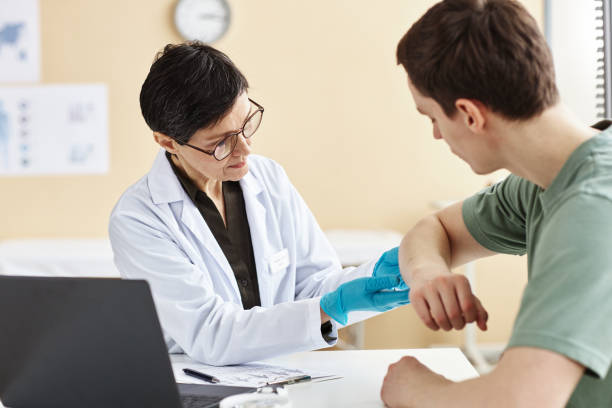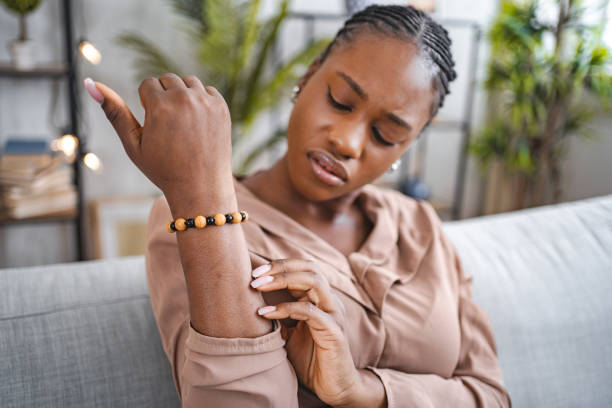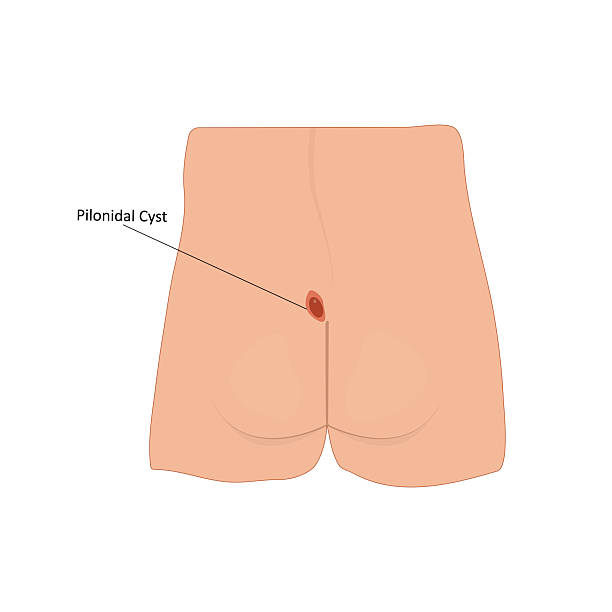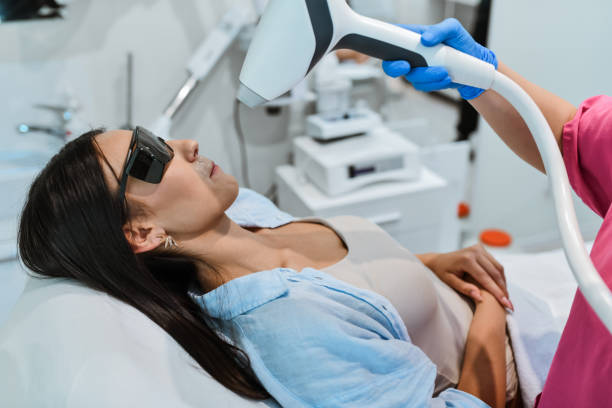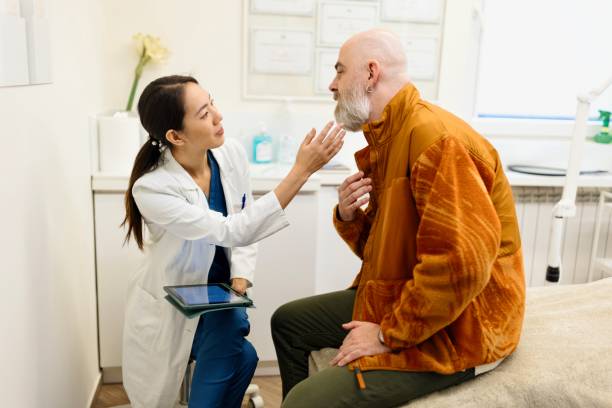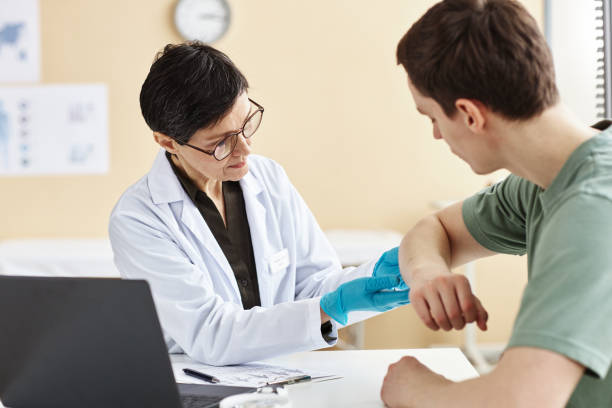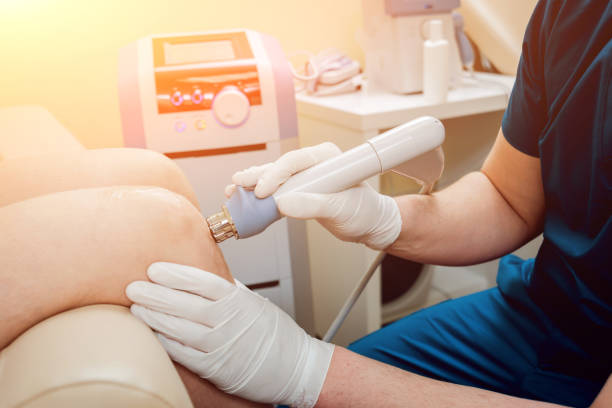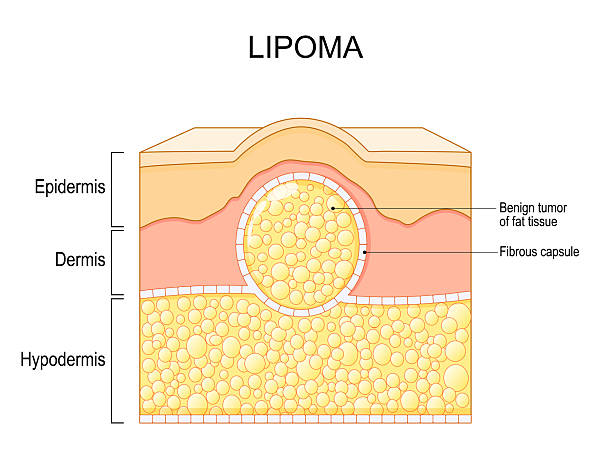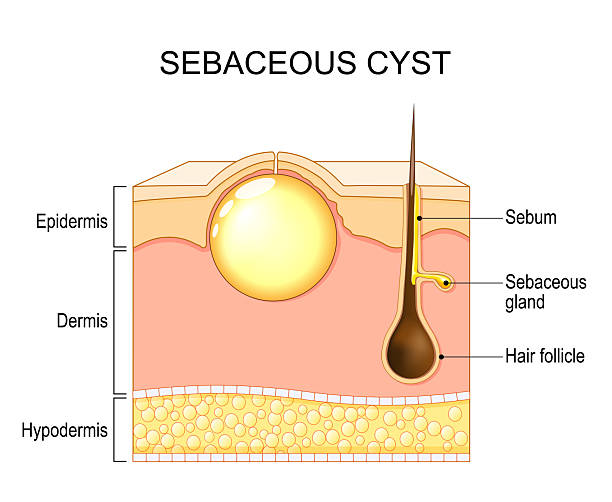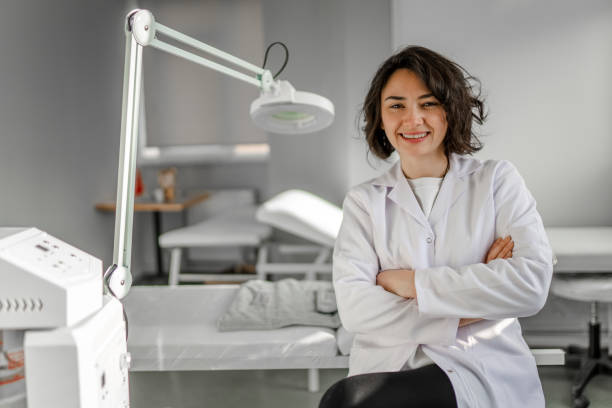Lipoma Treatment Near Me: How to Choose the Best Specialist | Revitalise London
Why “Lipoma Treatment Near Me” Matters for Your Health
If you’ve ever searched for lipoma treatment near me, you’re likely dealing with a soft, fatty lump beneath the skin that’s started to cause concern. While lipomas are often harmless, they can grow larger over time, become uncomfortable, or affect your appearance and confidence, making treatment a sensible choice.
When it comes to treating lipomas, finding the right specialist near you is more important than you might think. Local access to a skilled practitioner ensures you receive an accurate diagnosis, timely care, and easy follow-up. Whether you’re looking to remove a lipoma for cosmetic reasons or because it’s causing physical discomfort, choosing the right clinic plays a key role in your results.
Many people delay seeking treatment simply because they don’t know where to start. Others assume surgery is the only option, or worry about the recovery process. But today’s advances mean you may have several minimally invasive options available, especially when you choose an experienced professional nearby who understands your individual needs.
This article will help you understand the different treatments available, what to look for in a specialist, and how to make the best decision when searching for lipoma treatment near me. You’ll also learn why choosing a local clinic like Revitalise London can lead to a more convenient, comfortable, and confident journey.
Understanding Your Options for Lipoma Treatment Near Me
When searching for lipoma treatment near me, it’s helpful to know what options are available. Not all treatments involve surgery—today’s clinics offer a variety of methods to suit different needs, sizes of lipomas, and personal preferences.
Surgical Lipoma Treatment Near Me
This is the most common method and involves cutting out the lipoma completely. It’s generally performed under local anaesthesia and offers permanent results. It’s ideal for larger lipomas or those causing discomfort. Recovery time is minimal when performed by an experienced professional.
Laser Lipoma Treatment Near Me
A more modern and minimally invasive option, laser lipoma removal uses targeted laser energy to break down fat cells without major incisions. This method offers reduced scarring, quicker healing, and is often used for smaller lipomas or for cosmetic cases. It’s becoming increasingly popular for people searching for lipoma treatment near me that’s discreet and efficient.
Liposuction-Based Techniques
Some clinics offer liposuction-like methods to remove fatty tissue from under the skin. While effective for certain types of lipomas, this method may not always remove the entire capsule, which can lead to recurrence. However, it’s often preferred for its minimal scarring and fast recovery.
Non-Surgical Lipoma Treatment Near Me
Although less commonly recommended, some clinics offer non-surgical lipoma treatments such as steroid injections to shrink the lump. These are typically used for small, painless lipomas or for those who cannot undergo surgery. It’s important to discuss these options with a qualified specialist to understand their effectiveness and suitability.
Understanding these options helps you make a more confident choice when booking an appointment for lipoma treatment near me. A reliable clinic will walk you through each possibility and recommend the best one based on your case.
What to Look for in a Lipoma Treatment Near Me
Searching for lipoma treatment near me can give you many options, but choosing the right specialist requires careful consideration. Your treatment experience and outcome depend largely on the expertise and approach of the practitioner. Here’s what to keep in mind when evaluating your options.
1. Medical Credentials and Specialisation
Always ensure that the clinic or practitioner you’re considering is fully qualified. Look for specialists with board certification in dermatology or cosmetic surgery, along with specific experience in soft tissue conditions like lipomas. This background ensures they understand both the medical and aesthetic aspects of treatment.
2. Experience with Lipoma Cases
Not all skin specialists deal regularly with lipomas. Ask how often they perform lipoma removals and whether they’ve handled cases similar to yours. If you're considering laser or non-surgical options, your chosen expert must be trained in these advanced techniques.
3. Use of Modern Techniques and Technology
The best clinics offering lipoma treatment near me will provide the latest technologies, including laser removal, ultrasound-guided procedures, or minimally invasive excision. These options usually result in less scarring, faster healing, and better cosmetic outcomes.
4. Patient-Centred Consultation Process
A good specialist listens first. During your consultation, they should assess the lipoma thoroughly, explain all your options, and answer your questions. They should also consider your concerns about pain, recovery time, and appearance after treatment.
5. Positive Patient Reviews
Search for reviews on Google, clinic websites, and healthcare directories. Positive feedback from previous patients can offer insight into the doctor’s bedside manner, professionalism, and results. Before-and-after photos can help you visualise what to expect.
6. Transparent Pricing and Aftercare
Reliable clinics will provide clear information about treatment costs, potential follow-ups, and what’s included in your care. Whether you’re opting for surgical removal or newer non-invasive options, aftercare plays a vital role in recovery and satisfaction.
When searching for lipoma treatment near me, use these points to help you select a skilled, trustworthy professional. A qualified and caring specialist doesn’t just remove a lump—they help you feel confident, informed, and supported every step of the way.
How Location Affects Your Treatment Experience
When searching for lipoma treatment near me, location isn't just a matter of convenience—it can significantly impact the overall experience and outcome of your care. Choosing a local clinic offers several practical advantages that make a difference before, during, and after treatment.
Convenience and Accessibility
One of the most significant advantages of local treatment is easy access. Whether you're going in for a consultation, the actual procedure, or follow-up appointments, having a clinic nearby saves time, reduces stress, and ensures you stay on track with your care. If your lipoma requires multiple visits or if there's any discomfort after treatment, being close to your specialist can make recovery smoother.
Better Continuity of Care
Local specialists are easier to reach if you experience unexpected symptoms or complications. Having someone nearby who understands your medical history allows for quicker and more personalised support. A long-term care relationship is also easier to maintain, which is essential for monitoring the development of new lipomas or checking on healing progress.
Emergency or Urgent Care Access
Though rare, some lipomas can become painful, grow rapidly, or interfere with movement. In such cases, fast access to care is essential. Searching for lipoma treatment near me means you’re more likely to find a provider who can accommodate you on short notice, especially if urgent attention is needed.
Community Trust and Reputation
Local clinics often rely on word-of-mouth, online reviews, and repeat patients. By choosing a nearby clinic, you can easily research their reputation within your community. This transparency gives you confidence in your decision and the quality of care you’ll receive.
In short, when it comes to lipoma treatment near me, location plays a key role in ensuring comfort, accessibility, and peace of mind throughout your treatment journey.
The Importance of Personalised Care in Lipoma Treatment
When people search for lipoma treatment near me, they’re not just looking for a nearby clinic—they’re looking for care that’s tailored to their specific needs. No two lipomas are precisely alike. Some are small and painless, while others are large, uncomfortable, or cosmetically concerning. That’s why personalised care is essential.
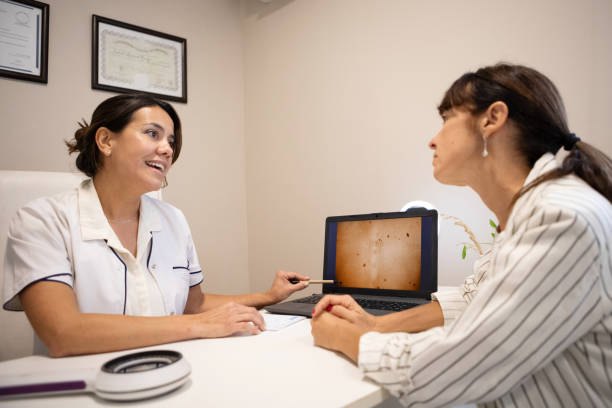
One Size Doesn’t Fit All
A good specialist will evaluate your lipoma based on size, location, growth pattern, and any related symptoms. Some lipomas may not require removal at all, while others could benefit from prompt intervention. Personalised care ensures that you’re not getting a generic solution, but one that fits your medical and personal goals.
Listening to Patient Concerns
The best clinics take time to understand how a lipoma affects your life. Is it painful? Does it affect your confidence? Does it interfere with your movement? A trusted provider will listen to your concerns and use them to shape a treatment plan that’s right for you. Whether you’re seeking removal for physical relief or aesthetic reasons, your goals matter.
Tailored Treatment Methods
Different treatment options exist, including surgical excision, liposuction, and laser removal. The right choice depends on your lipoma type, overall health, and preferences. When searching for lipoma treatment near me, look for clinics that offer a range of options and explain the pros and cons of each, rather than pushing a one-size-fits-all solution.
Better Outcomes, Higher Satisfaction
Patients who receive personalised care often report better results and greater satisfaction. That’s because their treatment is designed around them, not just the lump.
Ultimately, finding lipoma treatment near me should lead you to a clinic that values individualised care. It’s this attention to detail that can make your experience smoother, more comfortable, and more successful.
Revitalise London: Your Trusted Local Clinic for Lipoma Removal
When searching for lipoma treatment near me, Revitalise London stands out as a clinic known for excellence, compassion, and results. We understand how important it is to feel confident in your care provider, especially when dealing with something as personal as a lipoma. That’s why we’ve created a patient-first environment that offers safe, effective, and minimally invasive treatment solutions.
Expertise You Can Rely On
At Revitalise London, we specialise in skin and soft tissue conditions, including the removal of lipomas. Our team is led by highly trained professionals with extensive experience in diagnosing and treating lipomas of all types, sizes, and locations. Whether you’re dealing with a small, painless bump or a larger growth that’s interfering with your daily life, we have the skill and technology to help.
We use advanced diagnostic tools to assess your condition and rule out other possibilities, such as cysts or more serious concerns. Our clinicians take the time to explain your options and recommend the most suitable treatment based on your needs.
Lipoma Treatment Near Me With Advanced Techniques
As a modern clinic, we offer the latest minimally invasive options, including laser lipoma removal for suitable cases. This technique allows for faster recovery, less scarring, and a lower risk of complications. For deeper or more complex lipomas, we also provide traditional surgical removal under local anaesthetic, always with a focus on patient comfort and safety.
Our procedures are performed in a clean, well-equipped facility, and our team adheres to strict safety protocols. Most treatments are completed on an outpatient basis, meaning you can go home the same day.
Lipoma Treatment Near Me With Personalised, Compassionate Care
What makes Revitalise London truly unique is our personalised approach. We understand that no two patients are the same. Your consultation will involve a complete assessment, during which we’ll listen carefully to your concerns, discuss your aesthetic or functional goals, and tailor a treatment plan that works best for you.
Our supportive staff are always on hand to answer questions before and after treatment. We believe in empowering our patients with clear information and honest advice.
Trusted by Patients Across London
People searching for lipoma treatment near me often end up at Revitalise London because of our reputation. Our patients trust us for consistent results and a reassuring, friendly atmosphere. We’ve helped hundreds of people regain confidence and comfort by safely removing unwanted lipomas, and we’re ready to help you too.
How to Book a Lipoma Consultation Near You
If you’ve been searching for lipoma treatment near me, taking the next step is easier than you might think. Booking a consultation with a trusted specialist allows you to get clarity about your condition and explore the most suitable treatment options—all in a comfortable, professional setting.

Step 1: Find a Local Specialist
Start by looking for a reputable clinic in your area with experience in diagnosing and removing lipomas. Patient reviews, before-and-after photos, and clinic credentials can help you identify quality providers. A local clinic like Revitalise London offers both convenience and a high standard of care.
Step 2: Book an Appointment
You can book a consultation online through the clinic’s website or by calling their front desk. At Revitalise London, we’ve made this step as seamless as possible with a user-friendly online booking system. You’ll be able to choose a date and time that works for you and get a confirmation instantly.
Step 3: Prepare for Your Visit
Bring any relevant medical history and make a note of your symptoms, such as changes in size, pain, or discomfort. During your appointment, the specialist will examine the lump, may suggest imaging tests if necessary, and talk to you about the best treatment options.
Step 4: Follow Up with Confidence
If you decide to go ahead with treatment, your care team will guide you through every step, from preparation to aftercare. Having a clinic nearby means more effortless follow-ups, better communication, and peace of mind.
Lipoma Treatment Near Me Conclusion: Don’t Wait to Address Lipoma Concerns
If you’ve been searching for lipoma treatment near me, you’re already taking the first important step toward better health and peace of mind. While lipomas are usually harmless, they can sometimes become painful, grow in size, or impact your appearance and confidence. Knowing when to seek treatment—and choosing the right clinic—can make all the difference.
An experienced specialist will not only identify the type and severity of the lipoma but also guide you toward the safest and most effective treatment. Whether you need a quick, non-invasive procedure or a more involved removal, personalised care ensures the outcome is both successful and satisfying.
At Revitalise London, we offer modern techniques, expert consultations, and genuine patient care—all in one local, trusted setting. Convenience, safety, and quality service are what define us.
Don’t wait for your lipoma to become a bigger concern. Take control of your health by booking a consultation today with a trusted local expert. When you’re looking for lipoma treatment near me, Revitalise London is here to help, every step of the way.



